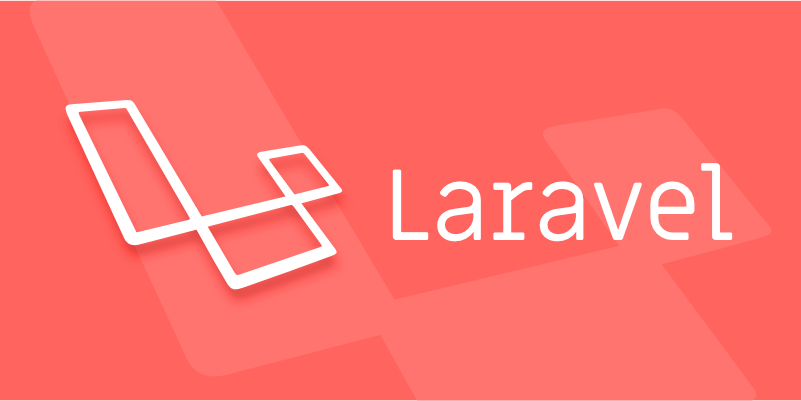When working with large datasets in Laravel, efficient pagination improves performance and user experience. Use simplePaginate() for “Next” and “Previous” links without total count, reducing database load. Select only necessary columns with select() to minimize memory usage. Publish and modify Blade templates to customize pagination views, especially for UI frameworks. For APIs, return structured pagination metadata using paginate() or API resources. These strategies optimize Laravel pagination based on specific needs.

When you're working with large datasets in Laravel, pagination isn't just a nice-to-have — it's essential for performance and user experience. The good news is Laravel makes it pretty straightforward, but there are ways to do it more efficiently depending on your use case.

Use Simple Pagination When You Don’t Need Total Count
If you only need "Next" and "Previous" links and don’t care about showing the total number of pages or jumping to a specific page, simplePaginate() is your friend. It runs a lighter query because it doesn’t calculate the total number of rows.

- It’s faster on large tables
- Reduces database load
- Perfect for infinite scroll or next/prev navigation
Just swap out paginate() with simplePaginate():
$users = User::where('active', 1)->simplePaginate(10);This method is especially useful when dealing with millions of records where counting all rows becomes expensive.

Paginate with Constraints to Reduce Memory Usage
By default, Laravel retrieves all columns when paginating. If your table has large fields like JSON blobs or text columns you don’t need on the listing page, this can add unnecessary overhead.
You can reduce payload size by selecting only the needed fields using select():
$users = User::select(['id', 'name', 'email'])->paginate(10);
Also, if you’re joining other tables or applying filters, make sure those are indexed properly. Otherwise, you might end up with slow queries that pagination won’t fix.
Customize Pagination Views Without Overcomplicating
Laravel uses Blade views for rendering pagination links. While the default styling works fine, you’ll often want to match your UI framework (like Tailwind or Bootstrap).
To customize:
- Run
php artisan vendor:publish --tag=laravel-paginationto publish the views - Modify the Blade templates under
resources/views/vendor/pagination
If you're using Alpine or Livewire, consider tweaking the view to avoid full page reloads. But keep it simple unless you really need AJAX-based navigation.
Handle API Pagination Differently
When building APIs, returning pagination metadata in a structured format (like JSON) helps clients consume your endpoints more predictably. Laravel's paginate() returns an object with current_page, per_page, etc., which you can directly return from a controller:
return User::paginate(10);
This outputs a consistent structure including:
- Current page
- Per-page count
- Total items
- Links for next/previous
You can also transform the data using API resources if you need to shape the output further.
That’s how I usually approach pagination in Laravel — nothing too fancy, but enough to cover most common scenarios.
The above is the detailed content of Implementing efficient pagination in Laravel. For more information, please follow other related articles on the PHP Chinese website!

Hot AI Tools

Undress AI Tool
Undress images for free

Undresser.AI Undress
AI-powered app for creating realistic nude photos

AI Clothes Remover
Online AI tool for removing clothes from photos.

Clothoff.io
AI clothes remover

Video Face Swap
Swap faces in any video effortlessly with our completely free AI face swap tool!

Hot Article

Hot Tools

Notepad++7.3.1
Easy-to-use and free code editor

SublimeText3 Chinese version
Chinese version, very easy to use

Zend Studio 13.0.1
Powerful PHP integrated development environment

Dreamweaver CS6
Visual web development tools

SublimeText3 Mac version
God-level code editing software (SublimeText3)

Hot Topics
 How to test Laravel API interface?
May 22, 2025 pm 09:45 PM
How to test Laravel API interface?
May 22, 2025 pm 09:45 PM
Efficient methods for testing Laravel API interfaces include: 1) using Laravel's own testing framework and third-party tools such as Postman or Insomnia; 2) writing unit tests, functional tests and integration tests; 3) emulating a real request environment and managing database status. Through these steps, the stability and functional integrity of the API can be ensured.
 How to customize Laravel's user authentication logic?
May 22, 2025 pm 09:36 PM
How to customize Laravel's user authentication logic?
May 22, 2025 pm 09:36 PM
Custom Laravel user authentication logic can be implemented through the following steps: 1. Add additional verification conditions when logging in, such as mailbox verification. 2. Create a custom Guard class and expand the authentication process. Custom authentication logic requires a deep understanding of Laravel's authentication system and pay attention to security, performance and maintenance.
 How to create Laravel package (Package) development?
May 29, 2025 pm 09:12 PM
How to create Laravel package (Package) development?
May 29, 2025 pm 09:12 PM
The steps to create a package in Laravel include: 1) Understanding the advantages of packages, such as modularity and reuse; 2) following Laravel naming and structural specifications; 3) creating a service provider using artisan command; 4) publishing configuration files correctly; 5) managing version control and publishing to Packagist; 6) performing rigorous testing; 7) writing detailed documentation; 8) ensuring compatibility with different Laravel versions.
 Laravel integration with social media login (OAuth)
May 22, 2025 pm 09:27 PM
Laravel integration with social media login (OAuth)
May 22, 2025 pm 09:27 PM
Integrating social media login in the Laravel framework can be achieved by using the LaravelSocialite package. 1. Install the Socialite package: use composerrequirelaravel/socialite. 2. Configure the service provider and alias: add relevant configuration in config/app.php. 3. Set API credentials: Configure social media API credentials in .env and config/services.php. 4. Write controller method: Add redirection and callback methods to handle social media login process. 5. Handle FAQs: Ensure user uniqueness, data synchronization, security and error handling. 6. Optimization practice:
 How to implement password reset function in Laravel?
May 22, 2025 pm 09:42 PM
How to implement password reset function in Laravel?
May 22, 2025 pm 09:42 PM
Implementing password reset function in Laravel requires the following steps: 1. Configure the email service and set relevant parameters in the .env file; 2. Define password reset routes in routes/web.php; 3. Customize email templates; 4. Pay attention to email sending problems and the validity period of tokens, and adjust the configuration if necessary; 5. Consider security to prevent brute-force attacks; 6. After the password reset is successful, force the user to log out of other devices.
 Common security threats and protection measures for Laravel applications
May 22, 2025 pm 09:33 PM
Common security threats and protection measures for Laravel applications
May 22, 2025 pm 09:33 PM
Common security threats in Laravel applications include SQL injection, cross-site scripting attacks (XSS), cross-site request forgery (CSRF), and file upload vulnerabilities. Protection measures include: 1. Use EloquentORM and QueryBuilder for parameterized queries to avoid SQL injection. 2. Verify and filter user input to ensure the security of output and prevent XSS attacks. 3. Set CSRF tokens in forms and AJAX requests to protect the application from CSRF attacks. 4. Strictly verify and process file uploads to ensure file security. 5. Regular code audits and security tests are carried out to discover and fix potential security vulnerabilities.
 What is Middleware in Laravel? How to use it?
May 29, 2025 pm 09:27 PM
What is Middleware in Laravel? How to use it?
May 29, 2025 pm 09:27 PM
Middleware is a filtering mechanism in Laravel that is used to intercept and process HTTP requests. Use steps: 1. Create middleware: Use the command "phpartisanmake:middlewareCheckRole". 2. Define processing logic: Write specific logic in the generated file. 3. Register middleware: Add middleware in Kernel.php. 4. Use middleware: Apply middleware in routing definition.
 Laravel Page Cache Policy
May 29, 2025 pm 09:15 PM
Laravel Page Cache Policy
May 29, 2025 pm 09:15 PM
Laravel's page caching strategy can significantly improve website performance. 1) Use cache helper functions to implement page caching, such as the Cache::remember method. 2) Select the appropriate cache backend, such as Redis. 3) Pay attention to data consistency issues, and you can use fine-grained caches or event listeners to clear the cache. 4) Further optimization is combined with routing cache, view cache and cache tags. By rationally applying these strategies, website performance can be effectively improved.






